Cheap sci-fi and hardboiled noir in 3D
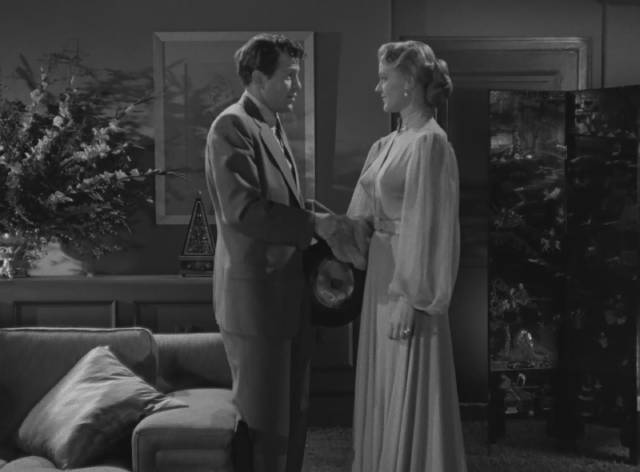
I recently spent an evening at my friend Steve’s for dinner (ribs) and a movie (actually two). It was the first time in a while as our socializing this summer has shifted with the hot weather to Sunday afternoon drinks on his porch. The impetus for this particular occasion was my purchase of two new 3D Blu-rays, which I don’t have the equipment to view at home. So after eating, Steve and I settled down in front of the big screen TV, hoisted our 3D glasses (to the usual mocking comment from his wife Val) and sank into the long-ago glories of the short-lived technical innovation of early 1950s Stereovision.
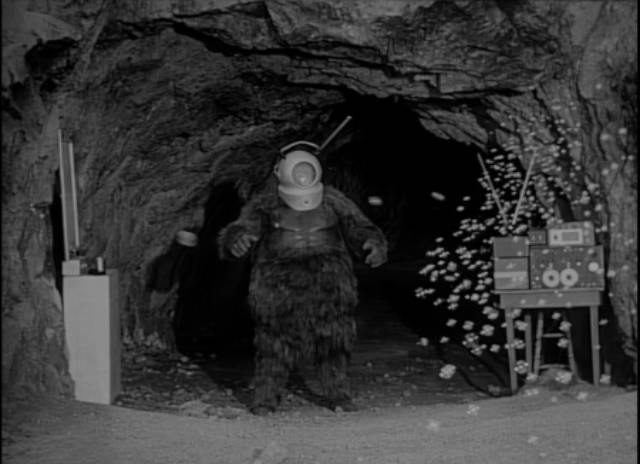
Robot Monster (Phil Tucker, 1953)
I’ve seen Phil Tucker’s infamous Robot Monster (1953) a number of times over the years. Cheap, absurd, with the silliest menace offered by ’50s science fiction, it has a charm similar to the works of Ed Wood, though Ed was in his way more accomplished than Phil. Tucker fumbles some of the most basic elements of filmmaking, failing to make certain important details clear – perhaps most egregiously, the rationale for the absurd design of the eponymous monster.
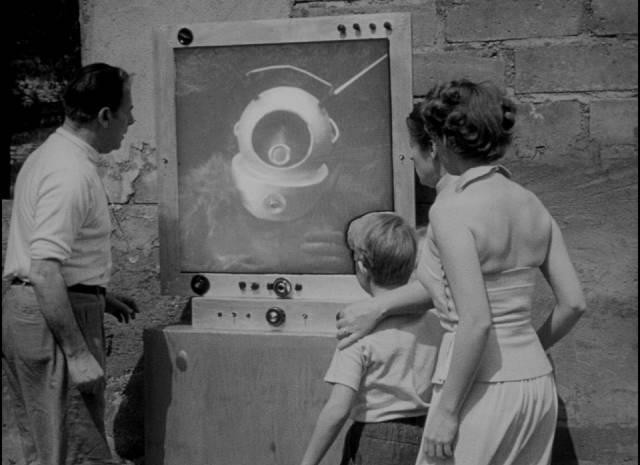
Released just two months after William Cameron Menzies’ Invaders From Mars (1953), Robot Monster shares that movie’s basic structure – the invasion is actually the dream of an imaginative young boy obsessed with spaceships and aliens. In this case, young Johnny (Gregory Moffett) encounters a pair of archaeologists working in a cave near where his family have stopped for a picnic. On the wall of the cave is a prehistoric painting, a key element in the script (I learned this from Anders Runestad’s absurdly comprehensive 700-page book about the film, I Cannot, Yet I Must, published in 2015) in that it depicts an ancestral human apeman with the head chipped away. After Johnny falls and hits his head, his imagination fills in the missing piece with a space helmet – hence the shaggy gorilla suit with diving helmet which shows up in his dream.
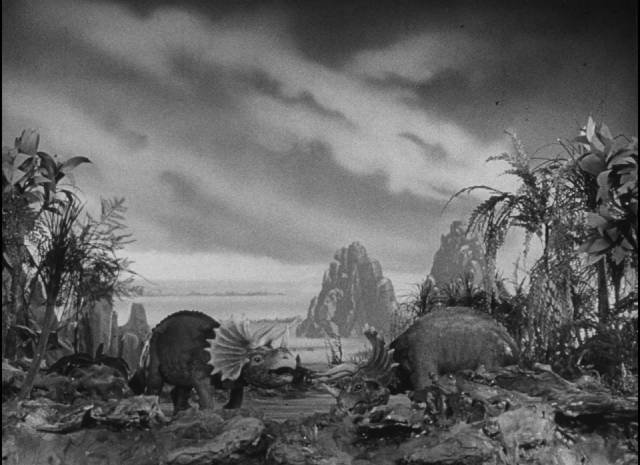
That dream has the older of the two archaeologists (John Mylong) filling in for Johnny’s dead father, while the younger Roy (George Nader), his assistant, becomes a kind-of boyfriend for Johnny’s older sister Alice (Claudia Barrett). The family hang out in some ruins protected by an electric fence which makes them essentially invisible to Ro-Man, who has wiped out the entire population of the planet in preparation for colonization by his alien race. Ro-Man is getting grief from his boss back home because he’s failed to kill these last seven Hu-Mans.
There’s a lot of running about on dry hillsides and gullies around Bronson Canyon, with Ro-Man bumping off Johnny’s younger sister Carla (Pamela Paulson) and succumbing to belated doubts about his mission when he seems to become attracted to Alice. It all seems hopeless until Johnny wakes up and things return to normal – or do they?
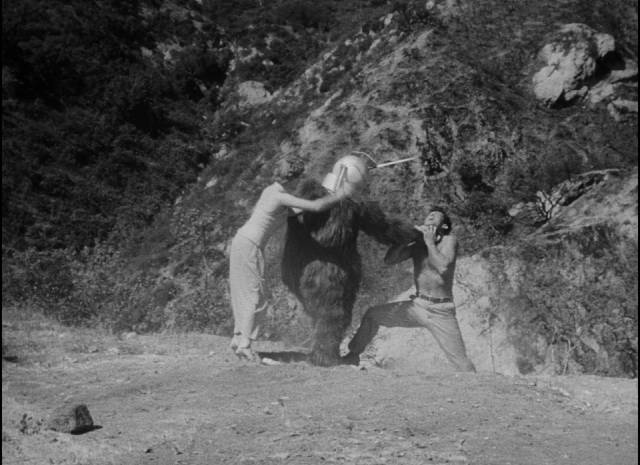
Wyott Ordung’s script is pretty perfunctory, but may have played better if Tucker’s direction was a bit more imaginative. The hints of advanced technology in the script are defeated by the cheap production values, particularly Ro-Man’s world-destroying device which is played by what looks like an old radio console from which streams of soap bubbles drift out of the cave mouth. Alice’s attempts to modify the family’s Viewscreen communication device are undermined by what looks like a drawerful of random wires and electronic parts which she pokes with the world’s largest soldering iron.
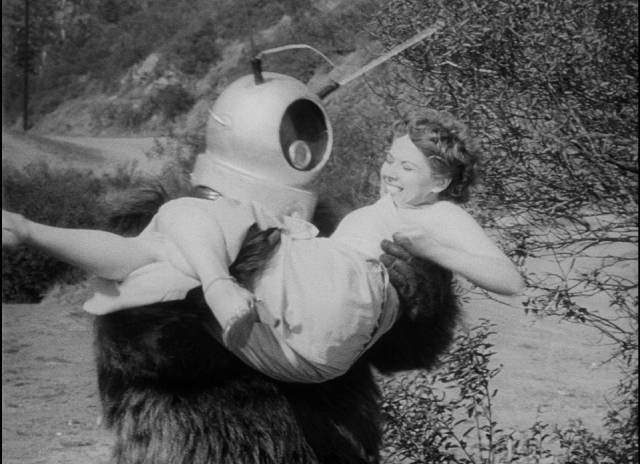
The movie’s finest moment isn’t actually in the shooting script (which is reprinted in Runestad’s book). When Ro-Man becomes infatuated with Alice and begins to doubt his mission, his boss back home gets angry and threatens to terminate him if he doesn’t kill the family … worse, the boss accuses him of sounding like a Hu-Man. This triggers Ro-Man’s tortured moment of existential doubt in which he out-does Hamlet: “To be like the human! To laugh! Feel! Want! Why are these things not in the plan? … I cannot, yet I must. How do you calculate that? At what point on the graph do ‘must’ and ‘cannot’ meet? Yet I must – but I cannot!” (That speech, along with Ro-Man’s boss, Great Guidance, were added in post-production to beef up the character.)
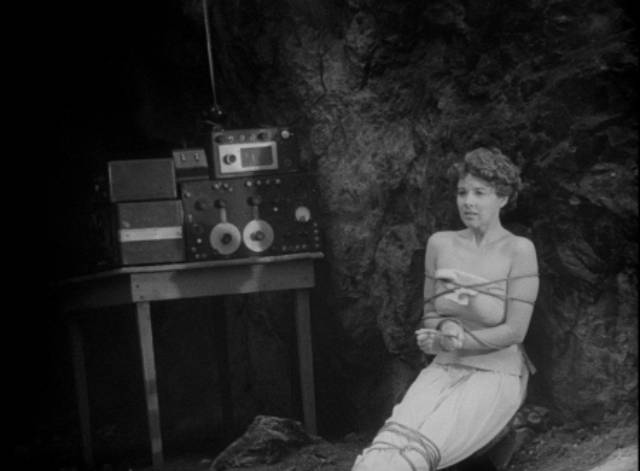
Watching all this in the 3D Film Archive’s new restoration can’t improve all the shortcomings, but the occasional sense of depth does make it more visually interesting. The most notable thing, though, is something definitely not apparent in a flat presentation: for a few brief moments during the montages showing the worldwide devastation caused by Ro-Man’s advanced weapons – montages of stock footage of earthquakes, hurricanes, floods, and clips of stop-motion dinosaurs and real lizards fighting – the editing includes completely different images for each eye. In a flat presentation, these images are merely superimposed over one another, but in 3D they remain separate. I’ve never come across this before and the effect is startling, disorienting and actually physically uncomfortable as your brain tries to reconcile the disparity. It’s Tucker’s most ambitious use of the technology, with the rest of the movie showing as little imagination in 3D as it does flat.
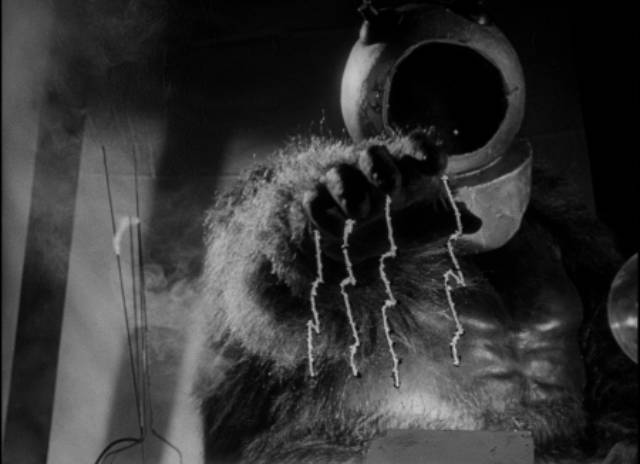
While the presentation of Robot Monster on Bayview’s Blu-ray isn’t revelatory, the disk does include a wealth of extras. The movie itself is presented in both digital and anaglyph 3D (with only a stingy single pair of red-blue glasses for the latter), as well as flat. There’s a commentary, numerous featurettes, a couple of 3D shorts, slideshows of promotional materials and a 3D comic book. The movie begins with a prologue, apparently included in the original theatrical release, in which someone named Slick Slavin sings a song using numerous celebrity impersonations, some more accurate than others – this outstays its welcome as it drags on and on.
The extra I enjoyed most was a piece using stereoscopic photographs to give a kind of tour of the U.S. in the ’50s and ’60s narrated by “stereoscopic anthropologist” Hillary Hess. Many of these restored colour images are quite stunning.
*
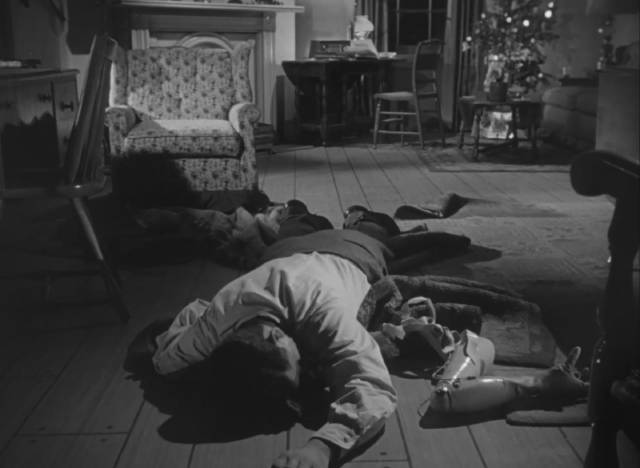
I, the Jury (Harry Essex, 1953)
Our second feature that evening was I, the Jury (1953), adapted by director Harry Essex from Mickey Spillane’s first Mike Hammer detective novel. Spillane had previously written for the pulps and scripted comics (including stories for Captain Marvel, Superman, Batman and Captain America), but after leaving the Army Air Corps, in which he’d been a pilot and instructor during the war, he decided to make some quick money by banging out a novel – which he reputedly did in just nine days. Published by E.P. Dutton in hardcover in 1947 and Signet in paperback the following year, I, the Jury sold 6 1/2 million copies in the U.S., launching a career which lasted five decades.
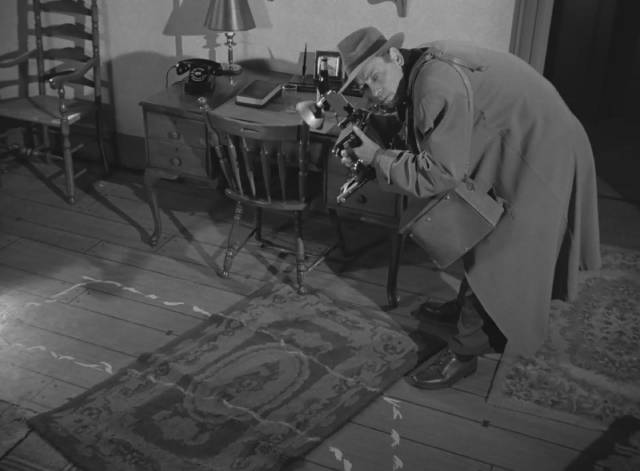
Drawing on the traditions of hardboiled detective fiction and film noir, Spillane added more explicit elements of sex and violence. His signature character, private eye Mike Hammer, was a sadistic thug whose fists superseded his investigatory skills. While the best-known (and best) adaptation of his work is Robert Aldrich’s Kiss Me Deadly (1955), the first may be the most faithful. Harry Essex was primarily a writer, notable for several film noirs and particularly for his scripts for Jack Arnold’s It Came from Outer Space (1953) and Creature from the Black Lagoon (1954), but he also directed four features – two in the ’50s, two in the ’70s. Anyone who has seen Octaman (1971) or The Cremators (1972) will be very surprised by his directing debut.
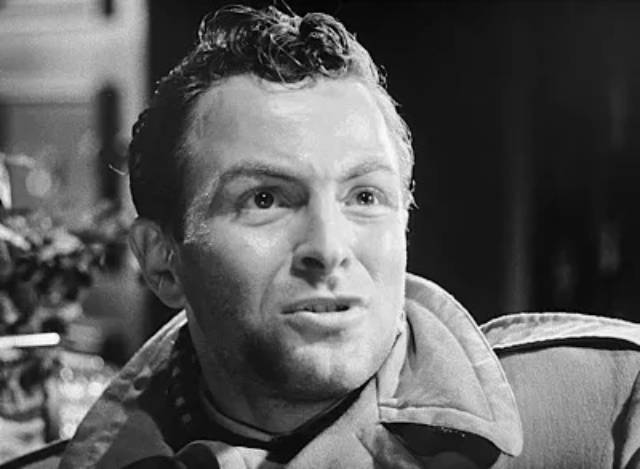
I, the Jury is taut and nasty, with striking cinematography by noir master John Alton. While the rich chiaroscuro lighting may be familiar from Alton’s other films, it’s given much greater expressive power by the use of 3D. The cinematographer displays a remarkable grasp of the new technology, creating a deep sense of space which is full of pitch black shadows and layered imagery. Every shot has multiple planes of action, with elements revealed or concealed in ways which enrich the narrative. (Although such judgments must be tentative, given Essex’s other movies it seems more than likely that the visual style here comes mostly, if not completely, from Alton.)
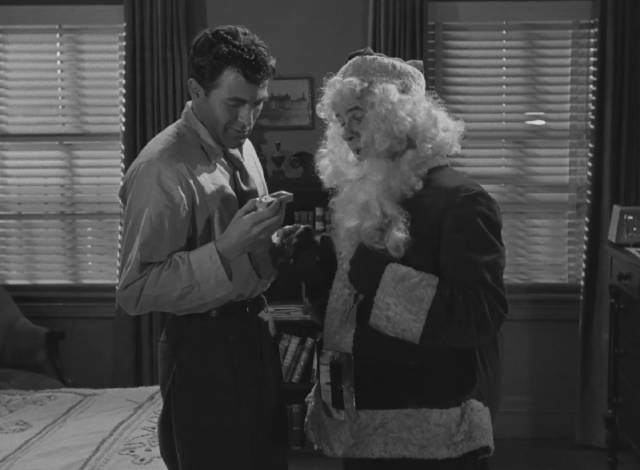
But I have one caveat: the visual world of the movie is so rich that it constantly distracted me from the story. I’d find myself focusing on what figures in the background were doing rather than the main characters in the foreground. There’s a shot from across the street towards the dance studio Hammer has just left and behind him on the far sidewalk, a drunk sits on the curb looking up at three carolling Salvation Army people. A car races up, the drunk jumping out of the way as a squad of cops pour out and rush into the studio. Alton’s deep-focus 3D draws your eye to all this background action and even now I couldn’t tell you exactly what Hammer was doing in the foreground.
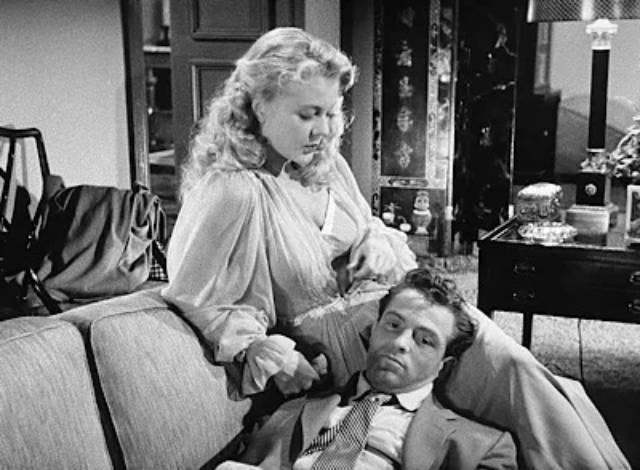
The movie has what may be the best 3D I’ve ever seen from the format’s first flowering in the early ’50s, but this may also signal a drawback of the technique. The space in which the story takes place engaged me far more than the story itself. In fact, much of the time I couldn’t follow the action – everything seemed random, I didn’t know why Hammer was going places and talking to people; I didn’t know why people were shooting at him or beating him up in a bar. So I watched the film again at home the next day in 2D and discovered that, although it has a ridiculously convoluted narrative, it does mostly make sense. And Alton’s cinematography still holds up well in 2D.
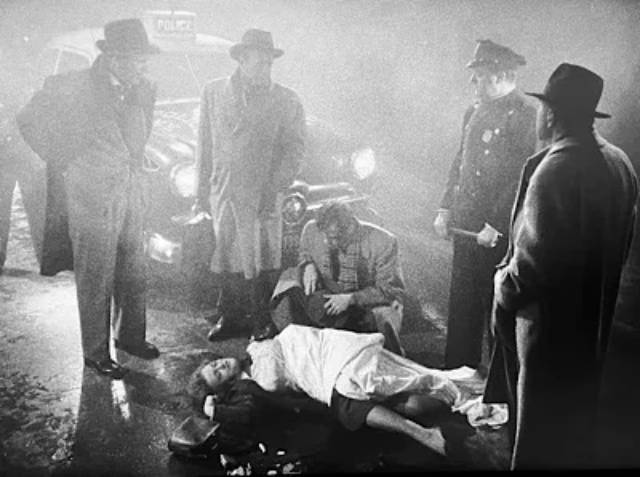
Spillane was a less artful writer than Dashiel Hammett, Raymond Chandler or James M. Cain, and I, the Jury (the movie) feels almost like a parody of hardboiled noir, everything exaggerated and turned up to eleven. Biff Elliot as Mike Hammer, in his theatrical debut after several years in episodic television, seems close to hysteria all the time as he searches for whoever murdered his wartime buddy Jack Williams (Robert Swanger). Determined to get personal revenge, he’s manipulated by police captain Pat Chambers (Preston Foster), who uses him to smoke out a gang of jewel thieves. Everyone Hammer encounters is connected in some way – keeping track of those connections is what I wasn’t able to do when I watched the 3D version – and as he stirs things up, more and more people die until he finally makes it to the mastermind behind it all and fulfills his determination to be not simply the jury, but also the judge and executioner.
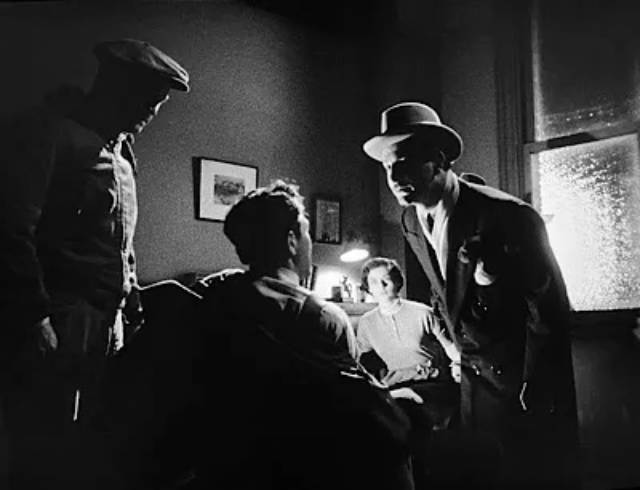
The narrative is so dense that it seems Essex managed to slip some things past the censors. Jack’s girlfriend Myrna (Frances Osborne) is a recovering drug addict, his death pushing her back into her old ways. There’s the not-so-coded suggestion of a homosexual relationship between leader of the gang Kalecki (Alan Reed) and his protege Hal Kines (Bob Cunningham). Peggie Castle’s celebrity psychologist Charlotte Manning is as corrupt as Dr. Lilith Ritter in Nightmare Alley (1947), using her position as a therapist to exploit her patients’ weaknesses and infiltrate the gang, while trying to seduce and manipulate Hammer.
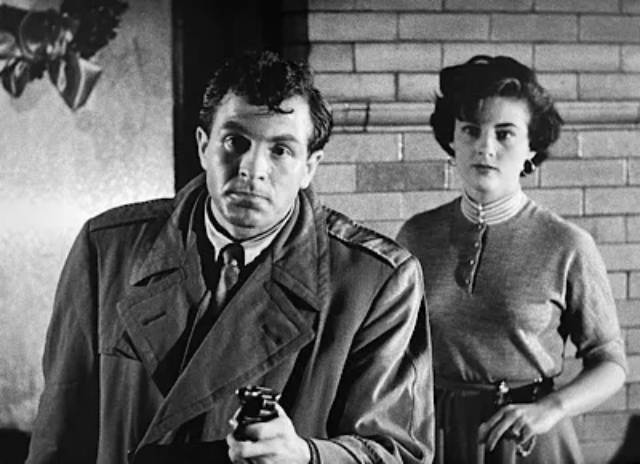
Although Hammer comes across as a rather unappetizing character, he seems to represent some kind of authorial wish fulfillment: every woman he meets throws herself at him as if he’s sexually irresistible, while his secretary Velda (Margaret Sheridan) has a possessive attitude towards him. Psychologist Charlotte tells him that his aggression isn’t a bad thing in a man as she tries to assert her influence over him. The weary cynicism of Sam Spade and Philip Marlowe is transformed into a crude power fantasy in Hammer, who true to his name smashes through every situation regardless of who gets hurt – sure, he’s angry when Jack is killed and weeps when Myrna dies, but he otherwise shows no signs of empathy, treating almost everyone with contempt. Apparently incapable of experiencing doubt, he has no compunctions about applying the death penalty to those he judges as guilty.
Moral qualms aside, though, I, the Jury will be well worth revisiting for Alton’s images, which not only include atmospheric backlot streets filling in for New York, but also some spectacular shots inside the famous Bradbury Building, in which Hammer’s office is located – there’s a brutal climactic fistfight on one of the wrought iron staircases which is made more precarious in 3D.
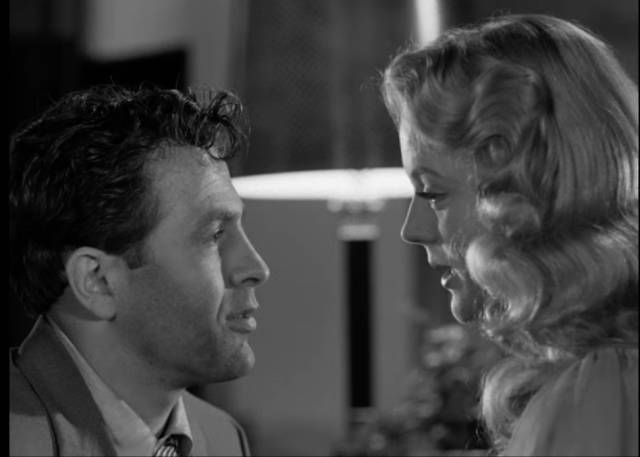
Classicflix has released the movie in a dual-format edition, with a 4K UHD disk plus a Blu-ray which includes both the 3D and flat versions. There are two commentaries – a new one from author Max Allan Collins and an archival track with Biff Elliot from 2004 – plus excerpts from an archival interview with Elliot and a brief but fascinating featurette which gets into the technical aspects of stereoscopic photography and Alton’s innovative use of the technique. There are also four half-hour TV episodes, including a Mike Hammer pilot written and directed by Blake Edwards, starring Brian Keith, which was initially picked up for broadcast by CBS, but then quickly cancelled by network head William S. Paley, who didn’t want the network associated with Spillane. In addition there are two episodes of O. Henry Playhouse, one featuring Preston Foster, the other Peggie Castle, and an episode of Public Defender with Biff Elliot in a supporting role.
Comments